 Scents have a powerful impact on people. They can affect our mood, behavior, and even our work performance.
Scents have a powerful impact on people. They can affect our mood, behavior, and even our work performance.
These are likely the reasons that 249.76 million Americans used air freshener sprays and room deodorizers in 2020, with a projected increase in 2024 to 255.88 million.
People are capable of discriminating about one trillion different odors. Dogs can sense 100 million and cats 200 million.
However, the area of the brain that analyzes odor is 40 times larger in dogs than in people. And cats appear to be able to smell 14 times better than people.
All of these "smelly goods" that we love to use have been found to cause health problems in 20% of the human population and 35% of those with asthma.
You may be wondering why all the big numbers and facts, especially about humans. The reason I mention them is that if these products can impact people (which we know to be true since they can speak!), who are not as sensitive to smells as our pets, what are they doing to our dogs and cats?
Don’t get me wrong; I like things to smell as wonderful as the next person. And perhaps I am more concerned about scents than some because my mother was an asthmatic who was extremely sensitive to all odors, and as a veterinarian, I know the negative impact some scents have on pets.
But I feel it is important that everyone, for the sake of their pets and themselves, is aware of the potential harms of scents.
It is important to know that even though a scent (or method of dispensing it) is safe for you or even a small child, it doesn't mean that it'll necessarily be safe for, on, or even around your cats and dogs.
As a general rule, cats are often more sensitive to the potentially toxic and other dangerous effects of essential oils and other scents than dogs are, but it very much depends on the scent, the delivery method, and the uniqueness of the pet.
If you plan to use any of the items listed below, please be aware of the potential problems of doing so and take the necessary precautions so that they don't wind up sickening or injuring your pets.
Skip to section:
Essential Oils and Pets
Some people want to use essential oils around their pets, myself included. However, this can be quite dangerous if not done properly. The concentration (i.e., amount of dilution) and type of oil are extremely important, but so too are the quality of the oil, the ventilation in the room, and a host of other factors.
If ingested — such as after getting on your pet’s fur and then licked off during grooming — certain essential oils can cause digestive upset, neurologic problems, and other, more serious concerns. And this is not to mention the irritation these oils can cause if they come into contact with your pet's sensitive skin or the way some oils could lead to irritation of your pet's sensitive nose or lungs.
Many dogs and cats derive comfort from being close to their people. So, if a diffused essential oil is harmful to them, they may stay in the room and not leave. And animals don’t always know that leaving a room or space will remove the discomfort they’re feeling anyway. So, watching for signs of discomfort is the only way to detect if your use harms or makes your pet uncomfortable.
If you do choose to use essential oils, they should be heavily diluted to reduce the impact on your pet. For more detailed information on the safe use of essential oils on or around pets, you may want to refer to Dr. Melissa Shelton's website and Animal Desk Reference book. You can also follow Dr. Janet Roark, "The Essential Oil Vet." And, as always, check with your veterinarian.
Check out our safe essential oil recipes to use in a diffuser around pets.
Potpourri
The scent of dry potpourri, though not immediately harmful to pets, can be quite irritating to their sensitive noses. But if your pet nibbles on some of the potpourri, it could cause choking, digestive upset, or even a digestive obstruction, which could require surgery to remove from the stomach or intestines.
Liquid Potpourri
Several complications can be caused to pets by exposure to liquid potpourri. The liquid varieties of potpourri typically contain two things that could pose a health and safety risk for your pets, especially since they are quickly absorbed orally and through the skin.
1. the essential oils that make them smell good,
2. the cationic detergents that allow the oils and water to come together.
Essential oils in potpourri pose the same risks to pets mentioned above. The cationic detergents in liquid potpourri can cause a wide array of potentially serious problems for your pets, especially cats, including:
- Corrosive burns to the mouth
- Skin or eye burns
- Stomach or intestinal ulcers
- Vomiting
- Retching
- Weakness
- Fever
- Breathing issues
- Neurologic problems
- Organ damage
- And more
If you use liquid potpourri, be sure to clean up all spills quickly and keep your pets (especially your cats) far away from them. Even a quick lick off a paw or fur can cause serious problems.
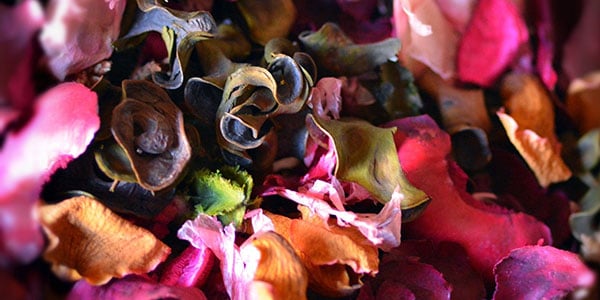
Dry Potpourri
Dry potpourri can contain a wide variety of fragrant dried herbs and flowers. The potential toxicity of such a mixture depends entirely on what plants are in it, but even nonpoisonous floral potpourri can irritate your dog’s gastrointestinal system and cause vomiting or diarrhea.
- If the potpourri mix includes harder items like miniature pine cones or bark chips, these could potentially lodge in your dog’s throat and cause breathing difficulties.
- Pine and other flora are toxic, but you might not be able to tell what each dried piece of potpourri is in a mix, especially since they're often artificially colored.
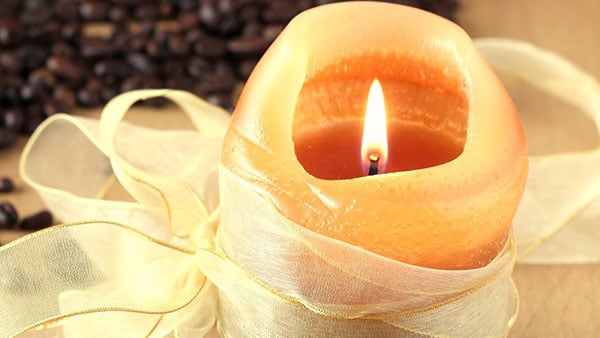
Scented Candles
Many people will burn scented candles to help set the mood, especially around the holidays. Unfortunately, like all candles, the scented varieties can pose a burn risk for your inquisitive pets and a fire risk for your home and family (in other words, your dog or cat can tip the candle and start a fire or even light themselves on fire).
The scents themselves can also cause stress or airway irritation for your cats and dogs, depending on how strongly scented the candles are and with which scents. As for which scents your pets are more likely to be OK with ... beyond the fact that citrus scents tend not to be crowd favorites with felines, there really isn't a general rule here. Just like with people, cats and dogs can all have their scent preferences and aversions. So it's a bit of trial-and-error, I'm afraid.
Candles don't need to be banished from your home or holiday decorating, but it's certainly a good idea to never leave a lit candle and your pets alone together in the same room. To avoid the flame but keep the smell, you can place a jar candle on a warming plate. Better yet, get one with an auto-shutoff.
Even better, you can use flameless candles, which will also eliminate the candle smoke that can irritate a cat or dog's respiratory system, leading to worsening of any existing asthma, bronchitis, tracheal (windpipe) problems, or other conditions of their respiratory system.
Cleaner Burning Option Ingredients
If you can't do without a regular flame candle, opt for "cleaner-burning" candles that are made from soy, beeswax, or vegetable wax. Avoid those made from (or with) paraffin, as that can release more potential impurities and irritants that can bother both your and your pet's respiratory system. And, speaking of impurities and respiratory irritants, make sure you're only burning these candles in rooms and areas with good ventilation.
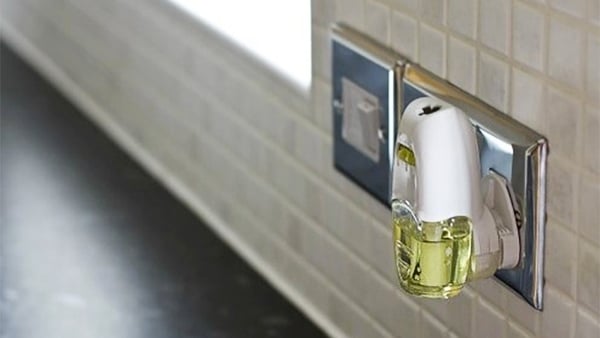
Air Fresheners (Including Pine Sprays)
Many artificial air fresheners, even some that are green or organic, actually don’t freshen or clean the air. Plus, they can contain chemicals that can be potentially hazardous. Did you know that less than 10% of their ingredients are disclosed to the public??
The worst offenders in the ingredient list are volatile organic compounds (VOC). The Environmental Protection Agency provides a list of health effects that VOC can cause:
- Eye, nose, and throat irritation
- Headaches, loss of coordination, and nausea
- Damage to the liver, kidney, and central nervous system
- Some organics can cause cancer in animals
- Some are suspected or known to cause cancer in humans
The Environmental Impact Assessment Review published a study that tested top-selling air fresheners and laundry detergents. What was discovered is frankly scary.
“Our analysis found 133 different VOCs emitted from the 25 products, with an average of 17 VOCs per product. Of these 133 VOCs, 24 are classified as toxic or hazardous under U.S. federal laws, and each product emitted at least one of these compounds. For “green” products, emissions of these compounds were not significantly different from the other products.”
Room sprays and deodorizers can also trigger asthma or coughing attacks in certain pets.
- Asthma in cats (“feline allergic bronchitis”) can cause coughing spasms due to the respiratory irritating effect of these sprays when breathed in.
- Dogs with sensitive airways — like those with a collapsing trachea, “kennel cough,” allergic bronchitis, and others — can experience the same problems.
Note that potpourri and scented candles can also cause asthma and coughing fits in cats and dogs, as highlighted above.
Another hazard to keep in mind is if pets decide to chew on a plug-in air freshener. This poses a danger of ingesting potentially harmful oils or causing them to short-circuit, resulting in a potential fire.

Incense
People like to burn incense, whether it be a stick or a cone, for several different reasons. Some love how it freshens up the room with a smell that lingers for hours; others do it for spiritual purposes and for some health reasons.
We often feel they are safer since they burn without an active flame, like a candle. But even though there seem to be a lot of great reasons for us to use them, their use isn’t safe for our pets.
Flame or not, they release smoke. Since pets have a more acute and powerful sense of smell, they are more susceptible to the effects of smoke. Additionally, your pet's age (puppy/kitten or senior), as well as their anatomy (brachycephalic – flat-faced pets), impacts the effects smoke can have on them.
Smoke can cause pets to experience upper respiratory issues such as sneezing, congestion, or watery eyes. If your pet has any respiratory issues, such as asthma or allergies, the smoke and smell can easily trigger a flare-up or make them worse if they are actively sick.
Making matters worse, the aromatic plant materials and essential oils used to create the scent in incense can also lead to all the other problems mentioned above.
If, for personal reasons, you want to burn incense, please take some safety steps to help protect your pets.
- Only burn the incense in a room your pets don’t have access to, which can be aired out
- Open windows in other rooms ( be sure your pet can’t get out of them)
- Maintain adequate ventilation with fans
- Use air purifiers where your pets are
NOTE: If you notice any of your pets experiencing breathing issues (panting, abdominal breathing, or abnormal gum color), contact a veterinarian immediately.
Scents That are Safe to Use Around Cats and Dogs
Cleaning Up Litter Box Smells
If you live with cats, there's a good chance that there are unpleasant smells in your home you'd like to mask. Before you go looking for something to light or spray to cover up the smell, take a few simple "housekeeping" steps to eradicate and prevent those nasty smells in the first place. Check out these "7 Ways to Reduce Litter Box Smell (and Messes)."
Once you've reduced the nasty kitty smells, there are several cat-safer methods to add other pleasant aromas to your home. See our list below.
Air Fresheners
Pet-Friendly Air Freshener
One Fur All non-toxic pet-safe air freshener spray
Pet Odor-Eliminating Jar Candle
The Pet Odor Exterminator is a great candle option to use with the warming plate solution mentioned below. This candle comes in many scents and works well at eliminating pet odors, as well as other smells. I LOVE this candle!! I used and sold it in my veterinary practice. I started using it because I had a sample candle sent to me that I'd forgotten about. Then one day, a poor dog was brought in with a very severe condition that emitted an overwhelming gagging smell that filled the entire building. I then remembered the sample candle, and within an hour, the "smell of death" (the dog survived!) was gone. I was a convert and used it regularly in my hospital. My clients bought them, too, and loved all the "fragrances," including the festive holiday scents.
You can buy these candles on Amazon – this is one of my favorite scents – or on Chewy.com. The candles use a natural enzyme to remove odor, and they're made in the USA. They have car fresheners too.
Smoke-free Scented Candle Warming Plate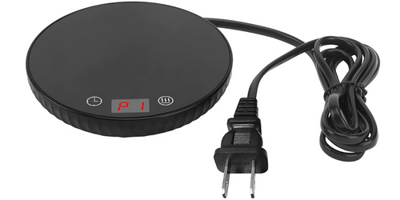
You can use a jar candle on a warming plate and get the same scented benefit without the smoke or danger of flames around your pets. No need to light the wick; just let the heat of the lamp or warming plate fill your home with scented bliss. Choosing a warmer with an automatic shut-off is much safer as well. This warmer (inset photo) has a 1–12 hour auto-shutoff and doubles as a coffee cup warmer too.
Simmering Aromatics
If you'd like to create your own aromas, one common trick is to put on a pot of simmering water and add ingredients such as cinnamon sticks, cloves, vanilla, or mint tea. Avoid using citrus, such as orange and lemon peels, if you know that your cat, which many do, finds it to be a highly unpleasant smell. For some, it can irritate or even stress them out.
Simmer Pot Recipes that are safe to use around pets:
- If you have a cat and there is a recipe you want to try, and it has citrus, try leaving that part out or using ¼ to ½ of what is recommended.
- When you are preparing your recipes, be sure to keep your pets from sampling the ingredients.
- Using a crock pot can be safer than simmering a pot on the stove.
This video shows how to make some great non-toxic air fresheners and how to store them for use over several weeks.
DIY Air Freshener
Here's how you can make a DIY air freshener. It uses rock salts, organic cloves, medical-grade orange essential oil, and a (pet-safe) fabric softener (this fabric softener from Attitude Little Ones has a Chamoline scent, this one from Mrs. Meyer's is Honeysuckle, and it comes in Lavender too).
Natural Fabric Refresher
A natural fabric refresher is Bac-Out Stain & Odor Remover. They use biodegradable ingredients, which are plant-based extracts and enzymes, and there are no artificial fragrances or dyes.
These brands are also safe for use around pets:
As long as lavender isn't ingested by a cat (eaten or licked off of a surface), a lavender-based product is safe to use around cats. The general concerns about safety relate to exposure to essential oils (ingestion and applying it undiluted to the skin), especially non-medical grade forms. Dogs are not affected by lavender.
A Note About Febreze
Despite rumors about the danger of Febreze to pets, the ASPCA Animal Poison Control Center reviewed Febreze's fabric freshener product and found that they are safe for use around pets. However, they do recommend following label instructions for use, never spraying directly on pets, and noting that there could be some mild skin irritation if your pets come into contact with Febreze while it's still wet, as well as minor stomach upset if it's ingested. Note that this only refers to the Febreze fabric fresheners, not the aerosol air fresheners, which present the same problems to cats as many other brands of air fresheners.
Air Purifiers
Though these devices won't add a smell to your home, they can help clear the air of any lingering odors and smoke. More good news, the better ones also help to remove fine particles from the air that could irritate your pet's lungs. It's also a good idea to regularly change your furnace and AC filters.
Some of our teammates in Seattle, Washington, use this air purifier, which has greatly helped with the smoke from forest fires. They really like the air quality sensor that indicates if the air is clean or dirty.
Warning: This filter has an ION setting. It’s recommended you don’t activate it – those of us who use it don't. While there are only a few studies regarding ion-producing purifiers, peer-reviewed research studies indicate that they may cause more harm with little benefit. Per the EPA, under certain use conditions, lung irritants can be produced well above levels that are considered to be harmful to people's health. They have been found to lead to increases in oxygenated VOCs and toluene. Exposure to these compounds has been linked to multiple health issues, such as irritation to the eyes, nose, and throat, headaches, liver, kidney, and central nervous system damage, and nausea. Some of the organics have been found to cause cancer in animals and people.
This purifier is a good one for use in smaller areas or on desktops.
You can also use bamboo charcoal bags in rooms, closets, cars, etc., to help purify the air. Just make sure your pets don't find the bags and break them open.
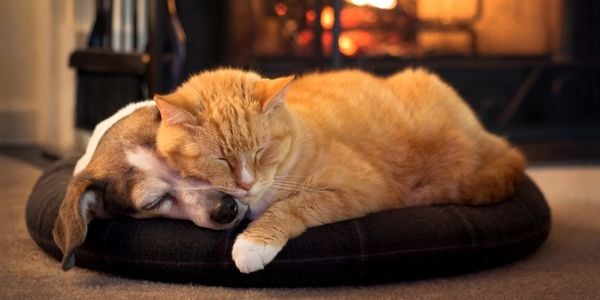
If you are feeling crafty, you can try making your own air purifier. The video below takes you through the steps to make a DIY air filter for a fraction of the cost of buying one. But please don't let your pets near or jump on it, as it could collapse, and their fur could get caught in the fan.
I hope this guide has helped you decide what scents to use to freshen up your home. If you have any concerns or questions, feel free to ask me in the comments below.


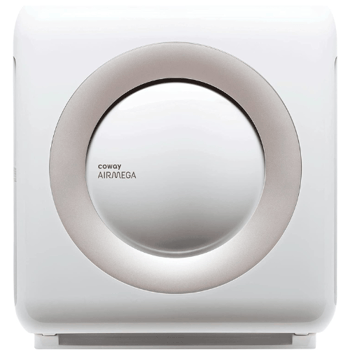
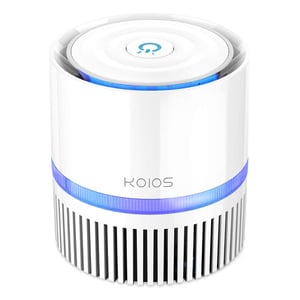 Koios air purifier
Koios air purifier
